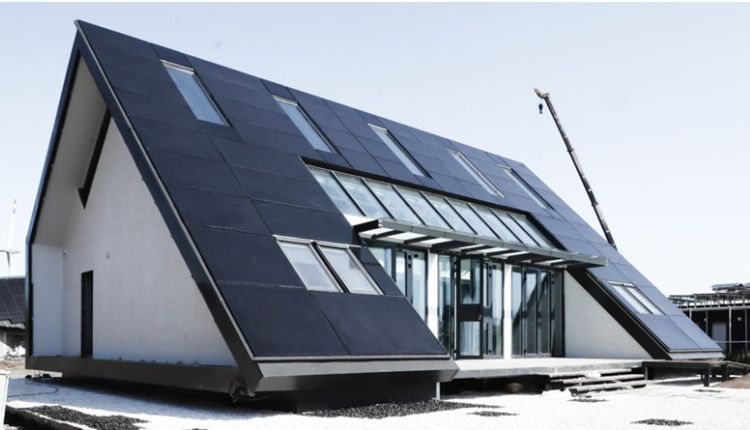In the pursuit of energy efficiency and sustainable living, passive houses have emerged as a gold standard in modern architecture. These structures rely on superior insulation, airtight construction, and high-performance building materials to minimize energy consumption. Among the critical components of a passive house, windows and doors play a pivotal role in maintaining thermal comfort while reducing heat loss.
Traditional double or triple-glazed windows have long been used to improve insulation, but vacuum insulating glass (VIG) represents a revolutionary leap forward. With its ultra-thin profile, exceptional thermal performance, and structural durability, VIG is rapidly becoming the best choice for passive house applications.
This article explores the six key advantages of HaanGlas VIG (vacuum insulating glass) and why it outperforms conventional glazing solutions in passive house designs.
HaanGlas VIG can play an important role in passive house design thermal insulation
1. No Heat Transfer by Convection – The Vacuum Advantage
One of the biggest challenges in window insulation is heat transfer via convection, where air movement between glass panes leads to energy loss. Traditional double-glazed windows use gas fills (e.g., argon or krypton) to reduce convection, but these gases can degrade over time.
Vacuum insulating glass eliminates this problem entirely. By creating a near-perfect vacuum (≤ 0.1 Pa) between two glass panes, VIG removes the medium for convective heat transfer. This results in:
- Zero air movement between panes, preventing convective heat loss.
- Stable thermal performance over decades, unlike gas-filled units that may leak.
- Superior insulation compared to even triple-glazed windows.
For passive houses, where thermal bridging must be minimized, VIG provides an unmatched solution.
How glass transfer solar energy
2. Thinner and Lighter – Suitable for Various Windows and Doors
Conventional high-performance glazing often comes with thick, heavy panels, making installation difficult and limiting design flexibility. Vacuum insulating glass, however, is exceptionally thin (as slim as 6-8mm total thickness) while delivering better insulation than much thicker alternatives.
Key Benefits of Thinner & Lighter VIG:
- Easier retrofitting – Can replace single-pane windows without structural modifications.
- Greater design freedom – Ideal for slim-profile facades, sliding doors, and frameless installations.
- Reduced load on frames – Less stress on hinges and support structures, enhancing longevity.
- Whether for historic building renovations or modern minimalist designs, VIG offers unparalleled versatility.
HAANGLAS VIG fit any existing windows-whether aluminium or PVC window
3. Unmatched Energy Efficiency – Ug-Value of 0.45 W/m²·K
The U-value (Ug-value) measures how well a window prevents heat from escaping. The lower the U-value, the better the insulation.
- Standard double-glazed windows: 1.0–1.2 W/m²·K
- High-performance triple-glazed: 0.6–0.8 W/m²·K
- Vacuum insulating glass: 0.45 W/m²·K
This ultra-low U-value means VIG significantly reduces heat loss, making it ideal for passive houses, where maintaining stable indoor temperatures with minimal heating/cooling is crucial.
- Impact on Energy Savings:
- Lower HVAC costs – Reduced need for artificial heating and cooling.
- Consistent indoor comfort – No cold drafts near windows in winter.
- Meets strict passive house standards (e.g., Passive House Institute requirements).
Vacuum-glazed-windows-VWS70-VWP91-ALUMINIUM-FIXED-WINDOWS-WITH-HYBRID-VACUUM-INSULATING-GLASS-1024×728
4. Safety Construction – Tempered Glass for Durability
Safety is a critical factor in glazing, especially for large windows and doors. VIG uses tempered glass, which is:
- 4-5x stronger than annealed glass.
- Shatter-resistant – Breaks into small, blunt pieces rather than sharp shards.
- Withstands high wind loads and impacts, making it suitable for high-rise buildings and extreme climates.
- Additionally, the vacuum-sealed design prevents moisture ingress, eliminating the risk of internal condensation and fogging—common issues in traditional insulated glass units (IGUs).
HaanGlas vacuum glass are fully tempered,after breakage,glass fragments are even and glass has uniform strength
5. Multi-Angle Installation – Consistent U-Value in Any Orientation
A unique advantage of HaanGlas VIG is that its thermal performance remains stable regardless of installation angle. Unlike gas-filled glazing, where convection currents can vary with orientation (leading to inconsistent U-values), vacuum glass performs equally well in:
- Vertical windows
- Horizontal skylights
- Sloped or curved installations
This makes VIG ideal for atrium roofs, sunrooms, and unconventional architectural designs where traditional glazing would lose efficiency.
Glass performance data changes with the installation angle
6. Superior Acoustic & Optical Performance – Rw 36 dB & 80% Light Transmittance
Beyond thermal insulation, VIG excels in:
- Sound Insulation (Rw 36 dB)
Effectively blocks outdoor noise (traffic, urban clamor), enhancing indoor tranquility.
Outperforms many double-glazed units (typically Rw 30-32 dB).
- High Light Transmittance (80%)
Maximizes natural daylight, reducing reliance on artificial lighting.
Maintains clarity and visibility without the haze sometimes seen in low-E coated glass.
This combination of noise reduction and light optimization makes VIG perfect for residential, office, and healthcare environments where comfort and well-being are priorities.
Conclusion: Why HaanGlas VIG is the Future of Passive House Design
Vacuum insulating glass is not just an incremental improvement—it’s a game-changer for energy-efficient construction. With its:
✔ Elimination of convective heat loss
✔ Ultra-thin, lightweight design
✔ Industry-leading Ug-value (0.45 W/m²·K)
✔ Tempered glass safety
✔ Stable performance in any installation angle
✔ Excellent soundproofing (Rw 36 dB) and light transmission (80%)
…it is clear why Haanglas VIG is the best choice for passive house windows and doors.
As sustainable building standards become stricter and energy costs rise, adopting vacuum insulating glass is a smart investment—delivering long-term savings, comfort, and environmental benefits.
Upgrade to VIG today and experience the future of high-performance glazing

